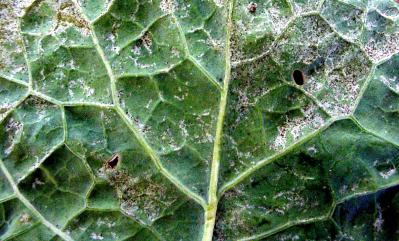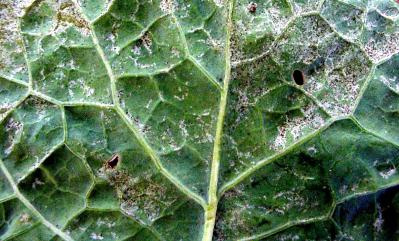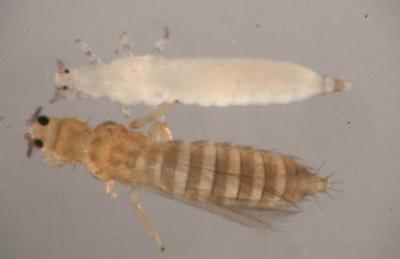


(Some species of Haplothrips are reported as pest in South Africa, we do not know if they are pests in Kenya or east Africa. Haplothrips are present in East Africa, but some of them are beneficial (predacious) and we do not know the status on the region. This will have to be reviewed when we finish with the datasheets). [br] When the status of Haplothrips in East Africa has been clarified we could decided if we leave this information on egg-laying habits. [br] Biological pesticides: check with list of Seif [br] FW: Include information on synthetic pesticides?
Coffee thrips (Diarthrothrips coffeae)
The adult thrips are 1-1.5 mm in length and grey-brown in colour. The nymphs are wingless and yellow. Both adults and nymphs feed on the underside of leaves, but in severe infestations they also attack the upper side of leaves, berries and green shoots. Attacked plant parts show irregular grey or silvery patches covered by numerous tiny black spots, which are the excreta of the thrips. In case of severe infestation the leaves dry up and fall off. Heavy outbreaks occur during periods of drought and high temperatures.
- Mulching reduces thrips numbers considerably.
